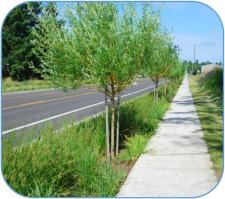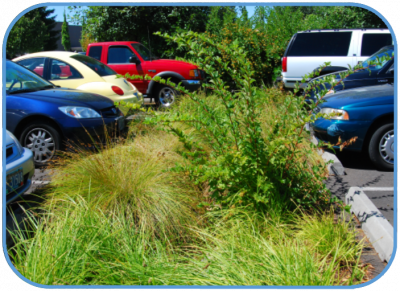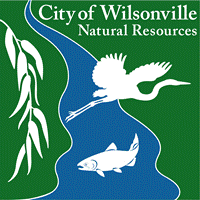Private Stormwater Facilities
What ARE Stormwater FACILITIES?
Stormwater facilities are any combination of landscape and structural features that slow, filter, or infiltrate (absorb) runoff after a rainfall. Types of facilities include vegetated systems (planters, swales, raingardens, ponds, etc.), and structural systems (green roofs, porous pavement and manufactured facilities). For helpful information about maintaining your stormwater facilities please refer to: (A Guide to the Stormwater Maintenance & Access Easement, A Manual for the Operation & Maintenance of Privately Owned Stormwater Facilities, and Stormwater Annual Inspection and Maintenance Report). Piping, inlets and catch basins are also important components that need adequate maintenance to assure facility function. All of these serve a common purpose: controlling the quality and quantity of stormwater runoff to help safeguard our valuable water resources.
THE PROBLEM WITH STORMWATER RUNOFF
When it rains, the stormwater runs off impervious surfaces (such as roofs and paved areas) instead of soaking into the ground.
Conventional stormwater management directs runoff into drains and pipes that carry it offsite and eventually discharge it into a local stream. This approach has a number of harmful effects:
- Impervious areas generate large volumes of runoff relatively quickly. The increased volume and speed of the runoff can cause flooding and erosion and damage natural habitat.
- The runoff picks up a variety of pollutants including oil, pesticides, metals, chemicals, and sediment that negatively impact water quality and fish habitat.
- During warm weather, the runoff absorbs heat from impervious surfaces. This increases the temperature of the receiving waters, with negative impacts on fish and other aquatic life.
- Less water is able to infiltrate into the ground. This reduces groundwater recharge, which reduces summer flows in streams.
A BETTER WAY TO FLOW
 The City of Wilsonville is actively pursuing a variety of measures to reduce stormwater impacts. One important approach is to manage stormwater on the property where it originates. This is commonly referred to as Low Impact Development. It includes the use of vegetated swales, pervious concrete, rain gardens, eco-roofs, etc. Onsite stormwater management uses processes that mimic nature. Onsite facilities allow runoff to soak into the ground, help filter out pollutants, and slow the flow rate of runoff leaving the site. This significantly reduces the volume and pollution levels in stormwater ending up in local streams and the Willamette River.
The City of Wilsonville is actively pursuing a variety of measures to reduce stormwater impacts. One important approach is to manage stormwater on the property where it originates. This is commonly referred to as Low Impact Development. It includes the use of vegetated swales, pervious concrete, rain gardens, eco-roofs, etc. Onsite stormwater management uses processes that mimic nature. Onsite facilities allow runoff to soak into the ground, help filter out pollutants, and slow the flow rate of runoff leaving the site. This significantly reduces the volume and pollution levels in stormwater ending up in local streams and the Willamette River.






